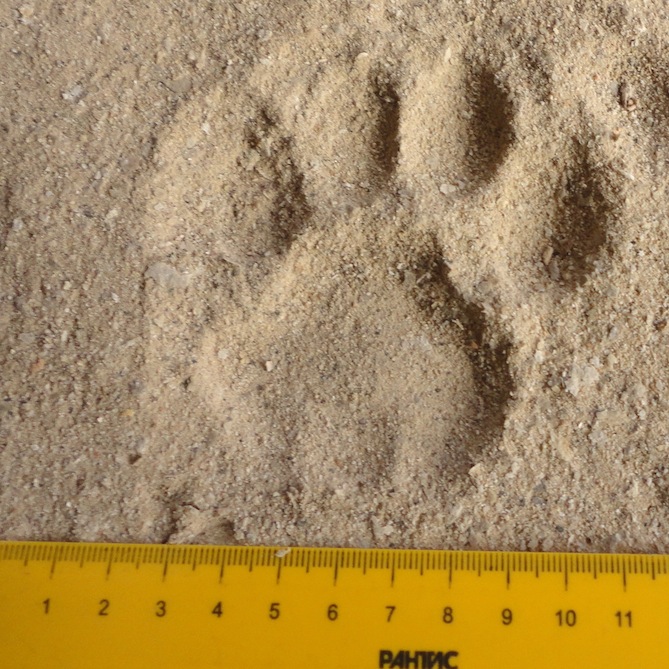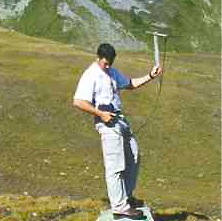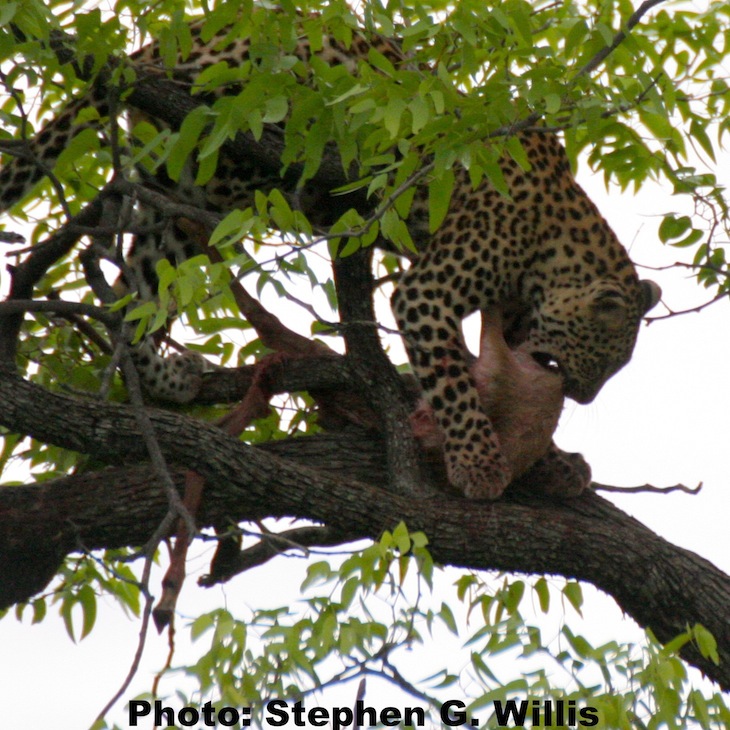Research
Dr Philip Stephens’ research interests
Biodiversity conservation &
wildlife management
 |
Predictive population ecology
| We now have a much nicer group website : www.conservationecology.org |
| To avoid duplication of effort from 2014 onwards, research news and new projects will be announced via that site. |
| News | |
| 24-04-2014 | Ten years after I started a postdoc on the subject, my paper on dynamic modelling of capital and income breeding strategies has finally appeared in Ecology (click here). The paper shows how capital and income breeding strategies can be affected by aspects of food supply (abundance, seasonality and predictability). Constructing the model emphasised that the physiological costs of carrying capital (which limit the accumulation of further capital) should not be confused with fitness costs; unless the latter are identified, it is likely that capital breeding will be preferred whenever possible. Given our current understanding of pinnipeds, fitness costs of carrying capital are not obvious and, thus, physiological considerations suggest that capital breeding should be preferred over income breeding. However, the model strongly suggested that other factors might play an important role – and alternative strategies for offspring development seem like good candidates. |
| 28-02-2014 | Georgina Palmer passes PhD viva for her thesis on “Deer in Britain: population spread and the implications for biodiversity”: congratulations George! |
| 22-10-2013 | Miranda Davis passes PhD viva for her thesis on “Projecting the impact of climate change on ungulate population dynamics: the importance of trophic interactions”: congratulations Miranda! |
| 05-09-2013 | Tom Mason passes PhD viva for his thesis on “Life-history, demography and behaviour of the Alpine chamois (Rupicapra rupicapra): the role of climatic and environmental change”: congratulations Tom! |
| 02-07-2013 | Stephens et al. (2005) listed as one of the 100 most influential papers of the 17,000+ papers published in the British Ecological Society’s journals over the past 100 years. The list of influential papers has been compiled to mark the Society’s Centenary. The paper chosen, which I wrote with Steve Buskirk, Greg Hayward and Carlos Martinez del Rio (all then at the University of Wyoming), emerged from lunchtime discussions about the zeal with which some ecologists were promoting information theoretic model selection as an alternative to null hypothesis testing. Then, as now, we understood the motivation to apply strong pressure to break ecology’s dependence on null hypothesis testing. Nevertheless, we emphasised that null hypothesis testing could still play a role in ecological analysis, whilst much remained to be done to improve the application and understanding of information theoretic approaches. Read more about these interests here. |
| 25-06-2013 | Announcement and registration details now available for the symposium on “From Energetics to Macroecology: Carnivore Responses to Environmental Change”. Click here for details. |
| 11-06-2013 | A forthcoming paper on Exaptation is now available online via TREE (here). This work – a collaboration with colleagues in Archaeology and Anthropology – arose from a meeting in the Institute of Advanced Studies. At that meeting, academics from a wide range of disciplines discussed exaptations (new uses for existing structures or traits), what they are and how well the phenomenon applies in different disciplines. The conclusions (of some of us at least), were that the construct was in need of tighter definition and, also, that it worked better in technology than in biology. See what you think! |
| 06-12-2012 | Ellie Devenish-Nelson passes PhD viva for her thesis on “Sarcoptic mange and the demography of the red fox, Vulpes vulpes“: congratulations Ellie! |
| 05-12-2012 | Charlie Bellamy awarded MSc. by Research for her thesis on “The use of birds as biodiversity indicators of climatic change: downscaling European indicators to regional and national trends”: congratulations Charlie! |
| 06-08-2012 | Julia Crabbe awarded MSc. by Research for her thesis on “Biodiversity perception and value in UK Protected Areas”: congratulations Julia! |
| 18-05-2012 | Steve Willis and I awarded an “Enhancing the Student Learning Environment” award by Durham University to encourage student engagement in ecology through involvement with remote monitoring of biodiversity. |
| 14-02-2012 | Symposium on Carnivore responses to environmental change (which I am co-organising with Chris Carbone, Nathalie Pettorelli, Roland Kays & Erlend Nilsen) to be funded by The Zoological Society of London. The symposium will happen on 14-16 November 2013. |
Uncertainty & statistics
The natural world is noisy and often unpredictable. Moreover, when studying behaviour or populations in natural contexts, it is seldom possible to conduct rigorous experiments or manipulations. Consequently, ecologists lean heavily on the science of statistics. Having dealt with many noisy ecological data sets, I have two particular interests in making inferences based on such data. First, I am interested in how we make the most robust inferences from noisy ecological data. Although I am uneasy about the almost religious zeal with which information theoretic approaches to model selection have been championed (Stephens et al. 2005, 2007a), I recognise the immense value of process-based models to help us get the most out of data (e.g. Richards et al. 2011). In that context, collaborations with Shane Richards, a world leader in model selection in the biological sciences, have been especially fruitful. Second, I am also interested in the magnitude and role of uncertainty in ecological inference. In that context, I am interested in methods to ensure recognition of the full extent of uncertainty in ecological data (e.g. Devenish-Nelson et al. 2010, 2013; Davis et al. 2012).
Sample publications:
- Stephens, P.A., Buskirk, S.W., Hayward, G.D. & Martínez del Rio, C. (2005) Information theory and hypothesis testing: a call for pluralism. Journal of Applied Ecology, 42, 4-12
- Whittingham, M.J., Stephens, P.A., Bradbury, R.B. & Freckleton, R.P. (2006) Why do we still use stepwise modelling in ecology and behaviour? Journal of Animal Ecology, 75, 1182-1189
- Stephens, P.A., Buskirk, S.W., Hayward, G.D. & Martínez del Rio, C. (2007a) A call for statistical pluralism answered. Journal of Applied Ecology, 44, 461-463
- Stephens, P.A., Buskirk, S.W. & Martínez del Rio, C. (2007) Inference in ecology and evolution. Trends in Ecology and Evolution, 22, 192-197
- Devenish-Nelson, E.S., Harris, S., Soulsbury, C.D., Richards, S.A. & Stephens, P.A. (2010) Uncertainty in population growth rates: determining confidence intervals from point estimates of parameters. PLoS One 5, e13628
- Richards, S.A., Whittingham, M.J. & Stephens, P.A. (2011) Model selection and model averaging in behavioural ecology: the utility of the IT-AIC framework. Behavioral Ecology & Sociobiology 65, 77-89
- Davis, M.L., Stephens, P.A., Willis, S.G., Bassi, E., Marcon, A., Donaggio, E., Capitani, C., & Apollonio, M. (2012) Prey selection by an apex predator: the importance of sampling uncertainty. PLoS One 7, e47894
- Devenish-Nelson, E.S., Stephens, P.A., Harris, S., Soulsbury, C.D. & Richards, S.A. (2013) Does litter size variation affect models of terrestrial carnivore extinction risk and management?. PLoS One 8, e58060
Monitoring & demography
Ecology is concerned with the abundance and distributions of organisms. To explain and make predictions about ecological phenomena, it is necessary to monitor population rigorously. Good monitoring data are essential for linking observed phenomena to environmental drivers, including intrinsic behavioural drivers and extrinsic factors, such as climate and food availability. Three principal interests relate to this requirement and form the bulk of my current research. First, I have a long standing interest in monitoring methods, especially for animals at low density or that are otherwise hard to spot (e.g. Stephens et al. 2001, 2005, 2006; Devenish-Nelson et al. 2013). Second, I use analytical and modelling approaches to study the intrinsic and extrinsic drivers of demography and population change (e.g. Stephens & Sutherland 1999; Stephens et al. 2002; Freckleton et al. 2004, 2008; Miquelle et al. 2005; Freckleton et al. 2009; Bywater et al. 2010; Devenish-Nelson et al. 2013). Third, I am interested in how best to combine this information to make predictions about the fates of populations and their consequent viability (Stephens et al. 2002; Feró et al. 2008; Devenish-Nelson et al. 2013). I am particularly interested in the high context-specificity of minimum viable populations, and the implications of this for conservation (Flather et al. 2011a,b; Beissinger et al. 2011).
Sample publications:
- Stephens, P.A. & Sutherland, W.J. (1999) Consequences of the Allee effect for behaviour, ecology and conservation. Trends in Ecology and Evolution, 14, 401-405
- Stephens, P.A., d’Sa, C.A., Sillero-Zubiri, C., & Leader-Williams, N. (2001) Impact of livestock and settlement on the large mammalian wildlife of Bale Mountains National Park, southern Ethiopia. Biological Conservation, 100, 307-322
- Stephens, P.A., Frey-Roos, F., Arnold, W., & Sutherland, W.J. (2002) Sustainable exploitation of social species: a test and comparison of models. Journal of Applied Ecology, 39, 629-642
- Freckleton, R.P., Stephens, P.A., Sutherland, W.J. & Watkinson, A.R. (2004) Amelioration of biodiversity impacts of genetically modified crops: predicting transient versus long-term effects. Proceedings of the Royal Society of London Series B, 271, 325-331
- Miquelle, D.G., Stephens, P.A., Smirnov, E.N., Goodrich, J.M., Zaumyslova, O.Yu. & Myslenkov, A.E. (2005). Tigers and Wolves in the Russian Far East: Competitive Exclusion, Functional Redundancy and Conservation Implications. In Large Carnivores and the Conservation of Biodiversity (eds J.C. Ray, J. Berger, K.H. Redford & R. Steneck), pp. 179-207. Island Press, New York
- Freckleton, R.P., Sutherland, W.J., Watkinson, A.R. & Stephens, P.A. (2008) Modelling the effects of management on population dynamics: some lessons from annual weeds. Journal of Applied Ecology, 45, 1050-1058
- Feró, O., Stephens, P.A., Barta, Z., McNamara, J.M. & Houston, A.I. (2008) Optimal annual routines: new tools for conservation biology? Ecological Applications, 18, 1563-1577
- Freckleton, R.P. & Stephens, P.A. (2009) Predictive models of weed population dynamics. Weed Research 49, 225-232
- Bywater, K., Apollonio, M., Cappai, N. & Stephens, P.A. (2010) Litter size and latitude in a large mammal: the wild boar Sus scrofa. Mammal Review 40, 212-220
- Flather, C.H., Hayward, G.D., Beissinger, S.R. & Stephens, P.A. (2011a) Minimum viable populations: is there a “magic number” for conservation practitioners? Trends in Ecology & Evolution 26, 307-316
- Beissinger, S.R., Flather, C.H., Hayward, G.D. & Stephens, P.A. (2011) No safety in numbers. Frontiers in Ecology and the Environment 9, 486
- Flather, C.H., Hayward, G.D., Beissinger, S.R. & Stephens, P.A. (2011b) A general target for MVPs: unsupported and unnecessary. Trends in Ecology & Evolution 26, 620-622
- Devenish-Nelson, E.S., Harris, S., Soulsbury, C.D., Richards, S.A. & Stephens, P.A. (2013) Demography of a carnivore, the red fox, Vulpes vulpes: what have we learnt from 70 years of published studies? Oikos (in press)
| Projects | People | Funding |
| Sarcoptic mange and the demography of the red fox, Vulpes vulpes | Ellie Devenish-Nelson Steve Harris Carl Soulsbury | Durham Doctoral Fellowship |
| Life-history, demography and behaviour of the Alpine chamois (Rupicapra rupicapra): the role of climatic and environmental change | Tom Mason Steve Willis Marco Apollonio | NERC |
| Projecting the impact of climate change on ungulate population dynamics: the importance of trophic interactions | Miranda Davis Steve Willis Petter Kjellander Marco Apollonio | Durham Doctoral Fellowship |
| Current and future ecological impacts of deer in the UK | Georgina Palmer Steve Willis Alastair Ward | The Whitehead Trust |
| Modelling recent population changes of European migratory songbirds | Christine Howard Steve Willis James Pearce-Higgins | NERC, BTO |
| Phenology and avian migration | Naiara O’Mahony Steve Willis | Durham Doctoral Fellowship |
| Using birds as indicators of the impacts of climate change | Steve Willis Richard Gregory Rhys Green Jamie Alison David Baker Alke Voskamp | Various |
| The long-term dynamics of ungulates in the Russian Far East and their importance for the conservation of the Amur tiger (Panthera tigris altaica) | Greg Hayward Dale Miquelle John Goodrich Olga Zaumyslova | USDA |
Behaviour & individual fates
The fate of a population is the sum of the fates of its component individuals. Although we have no a priori theory for making predictions about how populations will respond to changes in their environment, we do have a powerful theory for predicting how individuals will respond to those changes: natural selection. In light of this, I have three principal interests in this area. First, I use empirical approaches to study how the environment shapes the current behaviours and life history strategies of organisms (e.g. Mason et al. 2011, 2012). Second, I use a range of modelling techniques (including dynamic programming and replicator dynamics) to determine how aspects of the environment can influence the evolution of life-history strategies and other traits (e.g. Stephens et al. 2005, 2008; Houston et al. 2007; Blount et al. 2009; McNamara et al. 2009; Speed et al. 2010; Lee et al. 2011). Third, I use behaviour-based and dynamic modelling to establish the emergent properties of population dynamics when modelled individuals are allowed to make behavioural decisions informed by long-term fitness considerations (e.g. Stephens et al. 2002; Feró et al. 2008).
Sample publications:
- Stephens, P.A., Frey-Roos, F., Arnold, W., & Sutherland, W.J. (2002) Model complexity and population predictions. The alpine marmot as a case study. Journal of Animal Ecology, 71, 343-361
- Stephens, P.A., Russell, A.F., Young, A.J., Sutherland, W.J. & Clutton-Brock, T.H. (2005) Dispersal, eviction and conflict in meerkats (Suricata suricatta): an evolutionarily stable strategy model. American Naturalist, 165, 120-135
- Houston, A.I., Stephens, P.A., Boyd, I.L., Harding, K.C. & McNamara, J.M. (2007) Capital or income breeding? A theoretical model of female reproductive strategies. Behavioral Ecology 18, 241-250
- Stephens, P.A., Carbone, C., Boyd, I.L., McNamara, J.M., Harding, K.C. & Houston, A.I. (2008) The scaling of diving time budgets: insights from an optimality approach. American Naturalist, 171, 305-314
- Feró, O., Stephens, P.A., Barta, Z., McNamara, J.M. & Houston, A.I. (2008) Optimal annual routines: new tools for conservation biology? Ecological Applications, 18, 1563-1577
- McNamara, J.M., Stephens, P.A., Dall, S.R.X. & Houston, A.I. (2009) Evolution of trust and trustworthiness: social awareness favours personality differences. Proceedings of the Royal Society of London Series B, 276, 605-613
- Blount, J.D., Speed, M.P., Ruxton, G.D. & Stephens, P.A. (2009) Warning displays may function as honest signals of toxicity. Proceedings of the Royal Society of London Series B, 276, 871-877
- Speed, M.P., Ruxton, G.D., Blount, J.D. & Stephens, P.A. (2010) Diversification of honest signals in a predator-prey system. Ecology Letters 13, 744-753
- Lee, T., Speed, M.P. & Stephens, P.A. (2011) Honest signaling and the uses of prey coloration. American Naturalist 178, E1-E9
- Stephens, P.A., Houston, A.I., Harding, K.C., Boyd, I.L. & McNamara, J.M. (2014) Capital and income breeding: the role of food supply. Ecology 95, 882-896
| Projects | People | Funding |
| The evolution of reproductive strategies in female pinnipeds | Alasdair Houston John McNamara Ian Boyd Karin Harding | NERC |
| The evolution of aposematism | Mike Speed Jon Blount Graeme Ruxton | Various |
Consumers & resources
Although much of my work is focused on explaining and predicting behaviours and population dynamics within individual populations, I recognise the profound importance of species interactions in shaping the fates of individuals and populations. I have particular interests in the relationships between consumers and their resources (e.g. Davis et al. 2012), in light of both anthropogenic impacts on resources (e.g. Freckleton et al. 2004, 2008; Freckleton & Stephens 2009) and the ecological consequences for determining abundance (e.g. Stephens et al. 2003; Carbone et al. 2011). I am currently working on developing a number of different empirical systems to gain a better understanding of the relationships between consumer and resource abundance.
Sample publications:
- Stephens, P.A., Freckleton, R.P., Watkinson, A.R., & Sutherland, W.J. (2003) Predicting the response of farmland bird populations to changing food supplies. Journal of Applied Ecology, 40, 970-983
- Freckleton, R.P., Stephens, P.A., Sutherland, W.J. & Watkinson, A.R. (2004) Amelioration of biodiversity impacts of genetically modified crops: predicting transient versus long-term effects. Proceedings of the Royal Society of London Series B, 271, 325-331
- Freckleton, R.P., Sutherland, W.J., Watkinson, A.R. & Stephens, P.A. (2008) Modelling the effects of management on population dynamics: some lessons from annual weeds. Journal of Applied Ecology, 45, 1050-1058
- Freckleton, R.P. & Stephens, P.A. (2009) Predictive models of weed population dynamics. Weed Research 49, 225-232
- Carbone, C., Pettorelli, N. & Stephens, P.A. (2011) The bigger they come the harder they fall: body size and prey abundance influence predator-prey ratios. Biology Letters 7, 312-315
- Davis, M.L., Stephens, P.A., Willis, S.G., Bassi, E., Marcon, A., Donaggio, E., Capitani, C., & Apollonio, M. (2012) Prey selection by an apex predator: the importance of sampling uncertainty. PLoS One 7, e47894
| Projects | People | Funding |
| Red deer as a tool for habitat management in the Hebrides | Hagen O’Neill Sean Twiss Alastair Ward | NERC, FERA |
| The consequences of prey abundance for predator population density | Chris Carbone Nathalie Pettorelli Lewis Halsey | Various |
| Facilitation and population dynamics | Rob Freckleton | n/a |



